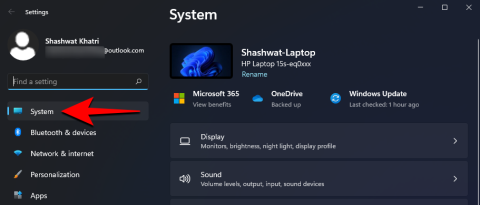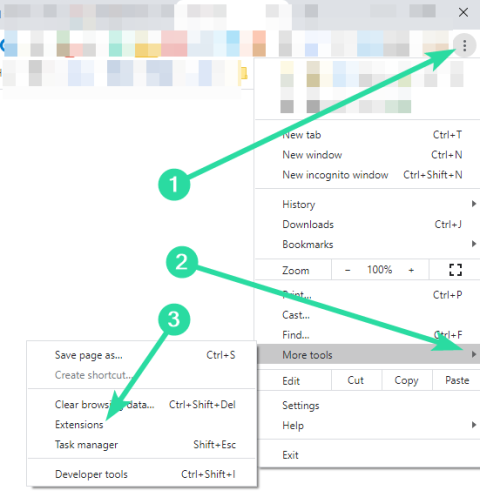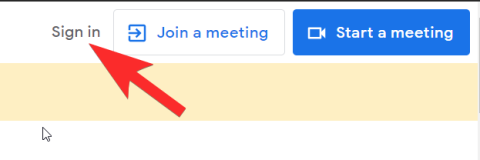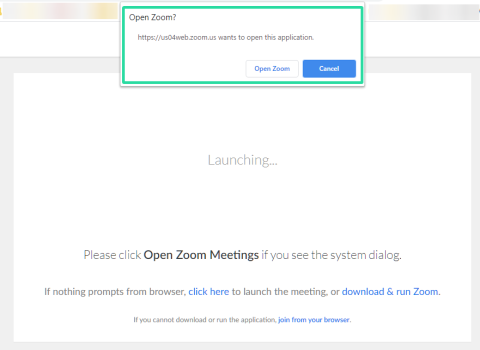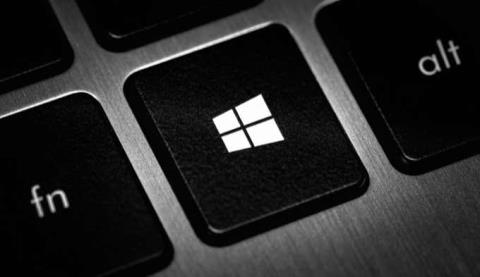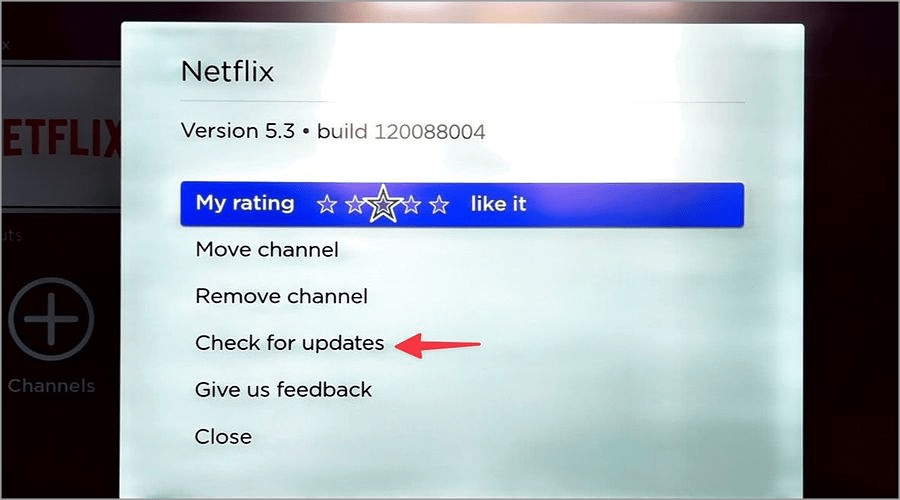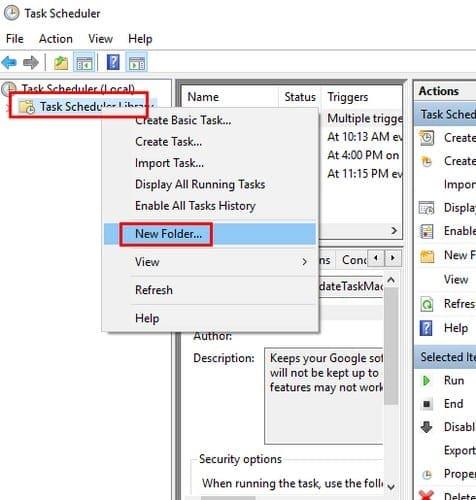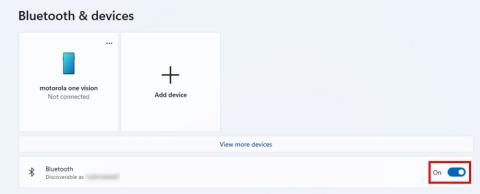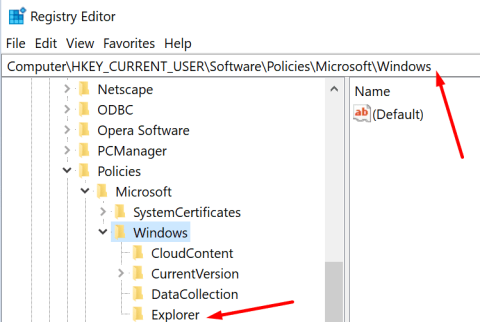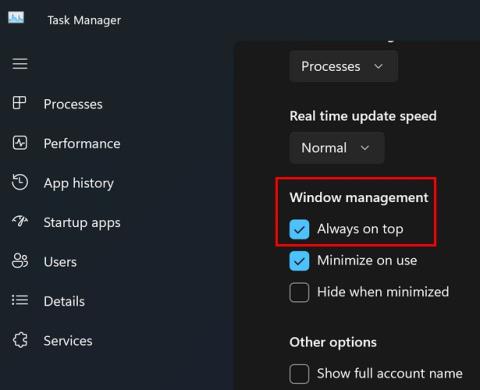Com obrir el tauler de control a Windows 11
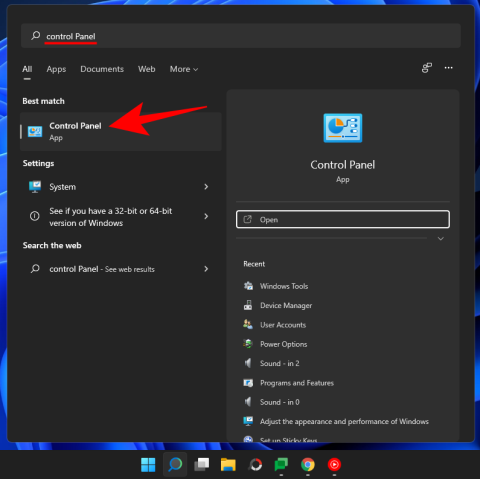
Descobreix com obrir el Tauler de control a Windows 11 amb diverses opcions eficients.
Els sistemes operatius són la línia de vida de qualsevol ordinador ja que, sense ells, seria impossible enviar correus electrònics, veure vídeos de gats o xatejar amb els nostres amics. Però de tant en tant, tots els sistemes operatius es troben amb problemes com ara arrencaments lents, bloquejos d'aplicacions, pantalla amb errors, so malbé i altres coses.
Si creieu que la vostra còpia de Windows 11 també s'ha comportat de manera estranya darrerament, creiem que és hora de prendre les vostres pròpies mans i reparar Windows 11.
Ara, abans de dirigir-vos a la tecnologia de reparació d'ordinadors més propera, fem una ullada als molts mètodes disponibles a la vostra disposició que us poden ajudar a reparar una instal·lació danyada de Windows 11.
Continguts
Mètode núm. 1: utilitzeu un solucionador de problemes de Windows
Els solucionadors de problemes de Windows han recorregut un llarg camí i ara poden solucionar la majoria dels vostres problemes amb un simple clic. La majoria de les ordres i comprovacions de resolució de problemes que normalment es feien a través de CMD i PowerShell s'inclouen ara a Troubleshooters, cosa que les fa molt més utilitzables quan es troben problemes. Si encara no podeu arreglar i reparar la vostra instal·lació de Windows 11, pot ser que valgui la pena provar-ho. Utilitzeu la guia següent per començar.
Premeu Windows + iel teclat per obrir l'aplicació Configuració. Assegureu-vos que "Sistema" estigui seleccionat a la vostra esquerra i feu clic a "Resolució de problemes" a la vostra dreta.
![Com reparar Windows 11 [15 maneres] Com reparar Windows 11 [15 maneres]](https://img2.webtech360.com/resources8/images31/image-6439-0105182722076.png)
Feu clic a "Altres solucions de problemes".
![Com reparar Windows 11 [15 maneres] Com reparar Windows 11 [15 maneres]](https://img2.webtech360.com/resources8/images31/image-405-0105182722143.png)
Ara cerqueu l'eina de resolució de problemes per al vostre problema actual en funció del problema que tingueu amb la vostra instal·lació. Feu clic a "Executar" al costat de l'eina de resolució de problemes.
![Com reparar Windows 11 [15 maneres] Com reparar Windows 11 [15 maneres]](https://img2.webtech360.com/resources8/images31/image-9440-0105182722204.png)
El solucionador de problemes ara farà les seves coses i solucionarà qualsevol problema que trobi amb el component o funció en qüestió.
![Com reparar Windows 11 [15 maneres] Com reparar Windows 11 [15 maneres]](https://img2.webtech360.com/resources8/images31/image-9235-0105182955896.png)
Mètode 2: desinstal·leu i torneu a instal·lar totes les actualitzacions recents de Windows
Si us enfronteu a bloquejos aleatoris, rendiment lent, inquietuds o errors de la blau després d'una actualització recent de Windows, podeu provar de desinstal·lar les actualitzacions recents per resoldre el vostre problema. Aquestes actualitzacions s'han de revertir amb una restauració del sistema mitjançant la guia de la part superior, però en cas que no tingueu un punt de restauració, podeu utilitzar la guia següent per desinstal·lar manualment les actualitzacions de Windows del vostre sistema Windows 11.
Premeu Windows + iel teclat per obrir l'aplicació Configuració. Ara feu clic a Windows Update a la vostra esquerra.
![Com reparar Windows 11 [15 maneres] Com reparar Windows 11 [15 maneres]](https://img2.webtech360.com/resources8/images31/image-6752-0105182955965.png)
Feu clic a "Actualitzar l'historial".
![Com reparar Windows 11 [15 maneres] Com reparar Windows 11 [15 maneres]](https://img2.webtech360.com/resources8/images31/image-9408-0105182722517.png)
Desplaceu-vos fins a la part inferior i feu clic a "Desinstal·la les actualitzacions".
![Com reparar Windows 11 [15 maneres] Com reparar Windows 11 [15 maneres]](https://img2.webtech360.com/resources8/images31/image-1959-0105182722745.png)
Ara se us portarà al tauler de control on obtindreu una llista de totes les actualitzacions principals recents instal·lades al vostre sistema. No obtindreu actualitzacions de seguretat enumerades en aquesta llista, ja que no es poden desinstal·lar per motius de seguretat. Feu clic i seleccioneu l'actualització que voleu desinstal·lar.
![Com reparar Windows 11 [15 maneres] Com reparar Windows 11 [15 maneres]](https://img2.webtech360.com/resources8/images31/image-3028-0105182722836.png)
Ara feu clic a "Desinstal·la" a la part superior.
![Com reparar Windows 11 [15 maneres] Com reparar Windows 11 [15 maneres]](https://img2.webtech360.com/resources8/images31/image-2165-0105182722899.png)
Nota: Si no obteniu l'opció Desinstal·la, és probable que esteu intentant desinstal·lar un component vital de Windows que trencaria la funcionalitat de la vostra instal·lació actual.
Feu clic a "Sí" per confirmar la vostra elecció.
![Com reparar Windows 11 [15 maneres] Com reparar Windows 11 [15 maneres]](https://img2.webtech360.com/resources8/images31/image-9581-0105182722985.png)
L'actualització seleccionada ara es desinstal·larà del vostre sistema. Us recomanem que reinicieu el sistema i comproveu si s'ha solucionat el problema al qual us heu trobat. Si no, continueu desinstal·lant les actualitzacions de Windows fins que trobeu el culpable.
Mètode 3: restauració a un punt de restauració del sistema més antic
Nota: aquest mètode suposa que teniu una còpia funcional de Windows 11 on podeu arrencar.
Podeu pensar en els punts de restauració del sistema com a vies per restaurar el vostre sistema a un estat anterior de Windows (quan es va crear el punt de restauració) juntament amb les aplicacions i la configuració que tenia el vostre PC aleshores.
Windows 11 crea automàticament punts de restauració del sistema a intervals regulars. Si voleu, també podeu crear punts de restauració.
També es creen quan s'instal·la una aplicació nova o una actualització de Windows.
A continuació s'explica com podeu provar de reparar Windows 11 mitjançant punts de restauració.
Obriu el menú "Inici" i escriviu "Crea un punt de restauració". A continuació, feu clic a l'opció que es mostra a continuació.
![Com reparar Windows 11 [15 maneres] Com reparar Windows 11 [15 maneres]](https://img2.webtech360.com/resources8/images31/image-7098-0105182723056.png)
Ara s'hauria d'obrir un menú emergent amb el títol "Propietats del sistema" i hauríeu de poder veure les opcions relacionades amb la Restauració del sistema tal com es mostra a continuació.
![Com reparar Windows 11 [15 maneres] Com reparar Windows 11 [15 maneres]](https://img2.webtech360.com/resources8/images31/image-1063-0105182723121.png)
Si el vostre menú emergent sembla idèntic al nostre amb la "Protecció" desactivada per a totes les vostres unitats, tenim males notícies per a vosaltres. A causa de la manca de punts de restauració del sistema anteriors, no té cap sentit continuar amb aquest mètode, ja que no hi ha cap punt de restauració al qual tornar.
En aquest punt, us recomanem que proveu el següent mètode.
Consell: si esteu llegint això només per veure com funcionen les coses, us suggerim que activeu la protecció de la unitat del vostre sistema (destacada a continuació), la que conté Windows 11, i que creeu un punt de restauració ara mateix.
![Com reparar Windows 11 [15 maneres] Com reparar Windows 11 [15 maneres]](https://img2.webtech360.com/resources8/images31/image-2132-0105182723214.png)
Aquí teniu com podeu fer-ho.
Seleccioneu la unitat amb l'etiqueta "Sistema" i feu clic a "Configura".
![Com reparar Windows 11 [15 maneres] Com reparar Windows 11 [15 maneres]](https://img2.webtech360.com/resources8/images31/image-6753-0105182723323.png)
A continuació, feu clic al botó "Activa la protecció del sistema" i assigneu una mica d'espai als punts de restauració del sistema movent el control lliscant de sota. Hem assignat només un 4% de la unitat del nostre sistema, que és prop de 4,5 GB.
Si els punts de restauració augmenten en nombre o mida, els més antics se suprimirien automàticament per deixar lloc als nous.
Feu clic a "Aplica" i després a "D'acord".
![Com reparar Windows 11 [15 maneres] Com reparar Windows 11 [15 maneres]](https://img2.webtech360.com/resources8/images31/image-2650-0105182723417.png)
La unitat que heu seleccionat anteriorment hauria de tenir la "Protecció" activada i ara hauríeu de poder crear punts de restauració del sistema.
![Com reparar Windows 11 [15 maneres] Com reparar Windows 11 [15 maneres]](https://img2.webtech360.com/resources8/images31/image-3719-0105182723520.png)
Mentre esteu al mateix menú emergent, feu clic al botó "Crea" per crear el primer punt de restauració del sistema del vostre PC.
![Com reparar Windows 11 [15 maneres] Com reparar Windows 11 [15 maneres]](https://img2.webtech360.com/resources8/images31/image-7789-0105182723725.png)
Ara hauria d'haver una finestra emergent demanant el nom del vostre punt de restauració, no dubteu a escriure el que vulgueu. Per a la vostra comoditat, l'hora i les dades actuals del sistema del vostre ordinador s'afegeixen automàticament per fer que aquest punt de restauració es distingeixi dels altres. De moment, estem escrivint "Instal·lació nova" ja que recentment vam tornar a instal·lar Windows 11.
Un cop fet, feu clic a "Crear".
![Com reparar Windows 11 [15 maneres] Com reparar Windows 11 [15 maneres]](https://img2.webtech360.com/resources8/images31/image-2823-0105182723892.png)
Al cap d'una estona, el vostre punt de restauració hauria d'estar llest. Ara hauríeu de poder comprovar-ho fent clic al botó "Restauració del sistema".
![Com reparar Windows 11 [15 maneres] Com reparar Windows 11 [15 maneres]](https://img2.webtech360.com/resources8/images31/image-7821-0105182956057.png)
Feu clic a Següent.
![Com reparar Windows 11 [15 maneres] Com reparar Windows 11 [15 maneres]](https://img2.webtech360.com/resources8/images31/image-7756-0105182724049.png)
I el punt de restauració del sistema acabat de crear hauria d'estar aquí.
![Com reparar Windows 11 [15 maneres] Com reparar Windows 11 [15 maneres]](https://img2.webtech360.com/resources8/images31/image-6893-0105182724113.png)
Seleccioneu el punt de restauració i feu clic al botó "Següent" (aleshores activat) us permetrà restaurar el vostre ordinador fins al moment en què es va crear el punt de restauració.
Mètode 4: Ús de l'eina d'indicador d'ordres SFC
El verificador de fitxers del sistema (SFC) i el servei i gestió d'imatges de desplegament (DISM) són dues eines de línia d'ordres que s'utilitzen més habitualment pels tècnics informàtics de les corporacions per donar servei a les màquines Windows.
Si aquesta és la primera vegada que escolteu parlar d'aquestes eines, no hi ha res de què preocupar-se, ja que generalment es consideren eines elèctriques i no molta gent les coneix.
Comencem primer amb SFC i veiem com podeu reparar Windows 11.
SFC es pot utilitzar per escanejar i verificar fitxers protegits (fitxers de Windows). Si detecta que un fitxer s'ha fet malbé i no es pot verificar, prova de restaurar una còpia nova de la carpeta següent del vostre PC.
C:\Windows
A continuació s'explica com podeu provar aquesta opció.
Feu clic al botó "Inici", escriviu "indicador d'ordres" i assegureu-vos d'executar l'aplicació com a administrador, tal com es destaca a continuació.
![Com reparar Windows 11 [15 maneres] Com reparar Windows 11 [15 maneres]](https://img2.webtech360.com/resources8/images31/image-8890-0105182956148.png)
Un cop al Símbol del sistema, escriviu l'ordre següent o simplement copieu-lo i enganxeu-lo. A continuació, premeu "Enter".
sfc /scannow
L'ordre anterior inicia una exploració a l'instant, que triga aproximadament uns quants minuts a una comprovació completa.
![Com reparar Windows 11 [15 maneres] Com reparar Windows 11 [15 maneres]](https://img2.webtech360.com/resources8/images31/image-4377-0105182724504.png)
Si l'escaneig detecta que tots els vostres fitxers estan en bon estat, es mostrarà a continuació.
![Com reparar Windows 11 [15 maneres] Com reparar Windows 11 [15 maneres]](https://img2.webtech360.com/resources8/images31/image-5446-0105182724592.png)
Però si hi ha alguns fitxers de Windows danyats al vostre PC, SFC hauria de poder solucionar-los amb una còpia nova.
Mètode núm. 5: utilitzant l'eina d'indicador d'ordres DISM
DISM és una altra eina de línia d'ordres que és molt més potent que SFC. Pot funcionar amb diversos tipus d'imatges de Windows 11 en formats .wim i .esd, gestionar els controladors abans de desplegar imatges als ordinadors i molt més.
Fem una ullada a com podeu utilitzar DISM per reparar Windows 11.
Obriu el símbol del sistema com a administrador mitjançant els passos que acabem d'esmentar per a SFC.
A continuació, enganxeu l'ordre següent per escanejar la vostra instal·lació de Windows 11 per detectar errors i premeu Intro.
Dism /Online /Cleanup-Image /ScanHealth
Hauries de veure alguna cosa com això.
![Com reparar Windows 11 [15 maneres] Com reparar Windows 11 [15 maneres]](https://img2.webtech360.com/resources8/images31/image-5068-0105182725172.png)
Un cop acabat, l'eina hauria d'informar dels seus resultats. Així és com es veu la nostra pantalla.
![Com reparar Windows 11 [15 maneres] Com reparar Windows 11 [15 maneres]](https://img2.webtech360.com/resources8/images31/image-9689-0105182725280.png)
A continuació, executeu aquesta ordre per veure si s'han detectat problemes i com de reparable és el vostre problema.
Dism /Online /Cleanup-Image /CheckHealth
Com que el nostre ordinador funcionava bé, l'ordre anterior no va informar de cap problema. La teva pot ser diferent.
![Com reparar Windows 11 [15 maneres] Com reparar Windows 11 [15 maneres]](https://img2.webtech360.com/resources8/images31/image-3654-0105182725335.png)
Si DISM va informar problemes amb el vostre ordinador, la següent ordre que hauríeu d'executar s'esmenta a continuació. Enganxeu-lo i premeu "Enter".
DISM /Online /Cleanup-Image /RestoreHealth
L'ordre anterior sol·licitarà còpies vàlides dels fitxers danyats de Windows Update. A continuació es mostra com es veu l'ordre en acció.
![Com reparar Windows 11 [15 maneres] Com reparar Windows 11 [15 maneres]](https://img2.webtech360.com/resources8/images31/image-7724-0105182725565.png)
I així és com es veu un cop finalitzat el processament.
![Com reparar Windows 11 [15 maneres] Com reparar Windows 11 [15 maneres]](https://img2.webtech360.com/resources8/images31/image-9311-0105182725854.png)
Tot el que heu de fer és reiniciar el vostre ordinador.
Si us considereu algú que entén les eines de línia d'ordres i els seus paràmetres, i voleu saber més sobre SFC i DISM juntament amb la gamma de paràmetres que es poden utilitzar amb ells, aquí teniu la documentació completa sobre SFC i aquí teniu la referència completa per DISM . Fes festa amb la informació!
Consell: si els vostres processos de Windows 11 es bloquegen sovint, reinicieu-los uns segons més tard i mostreu una alerta amb un munt de números i alfabets (també coneguts com a codis d'error), us recomanem que els introduïu en un motor de cerca com Google i entengueu què volen dir. Aquest mètode de resolució de problemes és extremadament eficaç contra errors i problemes específics, i sovint pot ser un salvavides.
Mètode 6: Ús de la reparació d'inici de Windows 11
Windows 11 ve equipat amb una eina de reparació d'arrencada integrada dissenyada per detectar i reparar els problemes d'inici habituals als quals us trobeu. Fem una ullada a com podeu utilitzar la reparació d'inici per arreglar Windows 11.
Obriu el menú "Inici" i feu clic al botó "Engegar".
![Com reparar Windows 11 [15 maneres] Com reparar Windows 11 [15 maneres]](https://img2.webtech360.com/resources8/images31/image-3277-0105182725914.png)
Mantingueu premuda la tecla "Majúscules" i feu clic a "Reinicia".
![Com reparar Windows 11 [15 maneres] Com reparar Windows 11 [15 maneres]](https://img2.webtech360.com/resources8/images31/image-794-0105182726004.png)
El vostre ordinador hauria d'arrencar en una pantalla blava amb un munt d'opcions. Feu clic a "Resolució de problemes".
![Com reparar Windows 11 [15 maneres] Com reparar Windows 11 [15 maneres]](https://img2.webtech360.com/resources8/images31/image-5932-0105182726311.jpg)
Feu clic a "Opcions avançades".
![Com reparar Windows 11 [15 maneres] Com reparar Windows 11 [15 maneres]](https://img2.webtech360.com/resources8/images31/image-5382-0105182726417.jpg)
Feu clic a "Reparació d'inici".
Poc després, Windows hauria d'escanejar i diagnosticar el vostre PC per detectar qualsevol problema que pugui impedir que funcioni correctament. Deixeu-ho fer la seva màgia i després d'un temps, la vostra còpia de Windows 11 hauria d'estar lliure de tots els problemes.
Consell: si la "Reparació d'inici" falla i veieu la pantalla que es mostra a continuació, hi pot haver dues possibles raons per això. O Windows 11 no ha pogut identificar els problemes o simplement no hi ha cap problema amb el vostre PC.
![Com reparar Windows 11 [15 maneres] Com reparar Windows 11 [15 maneres]](https://img2.webtech360.com/resources8/images31/image-4518-0105182726486.jpg)
En aquest punt, podeu provar de seguir l'opció 2 del mètode núm. 3 per iniciar una reparació de Windows 11. També podeu provar de reinstal·lar Windows 11 mitjançant l'opció "Actualitzar" a la configuració de Windows 11, en lloc d'anar a una instal·lació neta i netejant la teva unitat.
Aquest mètode d'instal·lació hauria de tornar a instal·lar Windows 11 mantenint tots els fitxers, aplicacions i configuració.
Mètode 7: Ús del fitxer ISO de l'instal·lador de Windows 11
Sabíeu que els fitxers que heu utilitzat per instal·lar Windows 11 també es podrien utilitzar per reparar una còpia danyada de Windows 11?
No molta gent ho sap, però es pot fer fàcilment i no triga gaire.
Perquè aquest mètode funcioni, necessiteu accedir als fitxers d'instal·lació de Windows 11 (ISO) o a la unitat USB d'instal·lació que potser heu utilitzat anteriorment per instal·lar Windows 11.
Opció 1: utilitzant el fitxer de configuració de la ISO de Windows 11
Mireu si teniu l'ISO de Windows 11 emmagatzemat en algun lloc del vostre ordinador. Si ho fas, perfecte! No cal descarregar res.
En cas que no tingueu l'ISO de Windows 11 a prop, us suggerim que seguiu aquesta guia per descarregar l'últim ISO disponible .
Abans de continuar, assegureu-vos que podeu arrencar Windows 11 i accedir a la ISO. Si podeu, passem al següent pas.
Localitzeu la ISO de Windows 11 i feu-hi doble clic.
![Com reparar Windows 11 [15 maneres] Com reparar Windows 11 [15 maneres]](https://img2.webtech360.com/resources8/images31/image-7519-0105182726601.png)
L'ISO s'hauria de muntar ara en una unitat de disc virtual del vostre PC amb Windows 11 i hauria de tenir un aspecte semblant a això
![Com reparar Windows 11 [15 maneres] Com reparar Windows 11 [15 maneres]](https://img2.webtech360.com/resources8/images31/image-6969-0105182726712.png)
Feu doble clic a la unitat virtual. Un cop dins, hi hauria d'haver un fitxer anomenat 'setup', feu-hi doble clic.
![Com reparar Windows 11 [15 maneres] Com reparar Windows 11 [15 maneres]](https://img2.webtech360.com/resources8/images31/image-4486-0105182726796.png)
Consell: com a alternativa, també podeu extreure la ISO en algun lloc del vostre ordinador, cosa que, per descomptat, trigaria una mica de temps, però us hauria de donar el mateix resultat.
Espereu que s'iniciï la configuració de Windows 11. Un cop fet, hauríeu de veure una pantalla semblant a la següent. Feu clic a "Següent".
![Com reparar Windows 11 [15 maneres] Com reparar Windows 11 [15 maneres]](https://img2.webtech360.com/resources8/images31/image-3622-0105182726853.png)
Accepteu els Termes i Condicions.
![Com reparar Windows 11 [15 maneres] Com reparar Windows 11 [15 maneres]](https://img2.webtech360.com/resources8/images31/image-4691-0105182726957.png)
Trieu aquí l'opció que més us convingui i feu clic a "Següent". Ens agradaria conservar els nostres fitxers, per això hem escollit "Conserva fitxers i aplicacions personals".
![Com reparar Windows 11 [15 maneres] Com reparar Windows 11 [15 maneres]](https://img2.webtech360.com/resources8/images31/image-4141-0105182727056.png)
Feu clic a "Instal·lar" per iniciar la instal·lació.
![Com reparar Windows 11 [15 maneres] Com reparar Windows 11 [15 maneres]](https://img2.webtech360.com/resources8/images31/image-7142-0105182727192.png)
Després d'uns segons, la configuració hauria de començar a preparar el vostre ordinador per a una actualització local, que repararà i actualitzarà tots els fitxers necessaris per executar Windows 11 al vostre ordinador.
![Com reparar Windows 11 [15 maneres] Com reparar Windows 11 [15 maneres]](https://img2.webtech360.com/resources8/images31/image-4659-0105182727255.png)
El vostre PC pot reiniciar-se unes quantes vegades per completar la reparació.
Un cop finalitzada la configuració, la vostra còpia de Windows 11 s'hauria de reparar completament i a punt per utilitzar-se.
Opció 2: Ús d'una unitat USB d'arrencada
Si per algun motiu, el vostre ordinador no s'inicia a Windows 11 o simplement es reinicia repetidament a causa d'un fitxer de Windows corrupte, aleshores aquesta opció us serà perfecta.
Abans de començar, comproveu si encara teniu el llapis d'instal·lació USB de Windows 11 que potser heu utilitzat per instal·lar Windows 11 al vostre ordinador. Si ho fas, no hi ha res de què preocupar-te.
En cas que no ho feu, aquí teniu com podeu crear un instal·lador USB de Windows 11 en un parell de minuts. Tingueu en compte que requereix un altre ordinador funcional amb Internet per descarregar Rufus i Windows 11 ISO. Simplement connecteu la unitat USB al vostre PC i reinicieu el sistema. Premeu qualsevol tecla del teclat quan se us demani que arrenqueu des del suport de recuperació i, posteriorment, procediu a reparar Windows amb les instruccions que apareixen a la pantalla. Tindràs l'opció de reinstal·lar Windows, arreglar els fitxers que falten, arreglar l'ordre d'arrencada o fins i tot utilitzar CMD per realitzar les teves pròpies comprovacions. Si necessiteu ajuda, podeu fer aquesta guia per restablir Windows des de la configuració del vostre suport de recuperació i molt més.
Consulteu aquesta guia: Com instal·lar Windows 11 des d'USB
Mètode núm. 8: reparació o reparació dels controladors
Many times you can face issues with your Windows installation due to incompatible, outdated, or conflicting drivers installed on your system. Drivers are essential programs that allow your components to communicate with your CPU and GPU for the proper functioning of your system. Having incompatible or conflicting drivers can cause issues with Windows and even take a significant impact on your performance. If some of your components seem to be misbehaving or you feel that your system is drastically slower than expected then it would be a good idea to check your drivers and perform any repairs if needed.
1. Check for conflicting or outdated drivers
Let’s check for conflicting or outdated drivers on your system. Windows automatically shows you a warning sign for misbehaving components or outdated drivers in Device Manager. Use the guide below to look for driver issues on your installation of Windows 11.
Press Windows + X on your keyboard and click on Device Manager.
![Com reparar Windows 11 [15 maneres] Com reparar Windows 11 [15 maneres]](https://img2.webtech360.com/resources8/images31/image-5728-0105182727364.png)
Look for components in the list with a warning side beside them. If any are found, use the methods below to troubleshoot driver issues on your system. However, if none are found then let’s check for new components on your system to identify misbehaving components.
Click on the ‘Scan for hardware changes’ button at the top of your screen.
![Com reparar Windows 11 [15 maneres] Com reparar Windows 11 [15 maneres]](https://img2.webtech360.com/resources8/images31/image-5177-0105182727469.png)
Windows will now scan for hardware changes and install any new components or drivers found on your PC.
![Com reparar Windows 11 [15 maneres] Com reparar Windows 11 [15 maneres]](https://img2.webtech360.com/resources8/images31/image-6246-0105182727564.png)
2. Fix driver issues
If you wish to fix driver issues on your system then you will need to reinstall drivers for the concerned component on your system. This can be done through Windows and manually as well. We recommend manually force removing drivers only if you are unable to remove the driver through Device Manager in Windows. Force removing the wrong drivers can cause serious issues on your system and even force you to reinstall Windows altogether. Hence, ensure that you identify and properly force remove drivers from your system only for the malfunctioning component. Use one of the guides below depending on your current needs and requirements.
Note: If you are using a laptop or a pre-built system then we recommend you download specific drivers for the concerned component from your OEM support side beforehand. This will allow you to install the necessary drivers easily once you have removed the malfunctioning driver.
Read: 6 Ways to Update Drivers on Windows 11
Option 1: Remove and reinstall a component through Device Manager
Press Windows + X on your keyboard and click on ‘Device Manager’.
![Com reparar Windows 11 [15 maneres] Com reparar Windows 11 [15 maneres]](https://img2.webtech360.com/resources8/images31/image-5728-0105182727364.png)
Right-click on the component for which you wish to remove the driver and select Properties.
![Com reparar Windows 11 [15 maneres] Com reparar Windows 11 [15 maneres]](https://img2.webtech360.com/resources8/images31/image-5695-0105182727667.png)
Now click and switch to the Driver tab at the top.
![Com reparar Windows 11 [15 maneres] Com reparar Windows 11 [15 maneres]](https://img2.webtech360.com/resources8/images31/image-3418-0105182727905.png)
Click on ‘Uninstall device’.
![Com reparar Windows 11 [15 maneres] Com reparar Windows 11 [15 maneres]](https://img2.webtech360.com/resources8/images31/image-2867-0105182728010.png)
Check the box for ‘Attempt to remove the driver for this device’.
![Com reparar Windows 11 [15 maneres] Com reparar Windows 11 [15 maneres]](https://img2.webtech360.com/resources8/images31/image-2316-0105182728120.png)
Finally, click on ‘Uninstall’.
![Com reparar Windows 11 [15 maneres] Com reparar Windows 11 [15 maneres]](https://img2.webtech360.com/resources8/images31/image-902-0105182728296.png)
The device driver will now be removed and the device will be uninstalled from your system. You will now be prompted to restart your device. Restart your device as soon as possible and then reinstall the concerned drivers from your OEM’s support site. If you do not have the concerned drivers on your OEM site, then simply scan for hardware changes using the guide above and the necessary drivers will be automatically installed on your system.
Option 2: Manually force remove a driver and reinstall it
You can also manually force remove a driver using a third-party utility. This is not recommended as if Windows is not allowing you to remove a driver then it is probably an essential component that could cause issues on your system. We recommend you properly identify the concerned drivers before removing them from your system. Additionally, you should keep the latest replacement drivers handy so that you can reinstall them as soon as possible. Use the guide below to manually force delete concerned drivers from your system.
We will be using Driver Store Explorer to manually force remove the concerned drivers from your system. Driver Store Explorer is an open-source utility used to identify and remove all the drivers installed on your system. It is hosted on GitHub and can be compiled natively too in case privacy is a concern.
Download Driver Store Explorer to your local storage using the link above. Extract the archive to a convenient location and then launch the app using Rapr.exe.
![Com reparar Windows 11 [15 maneres] Com reparar Windows 11 [15 maneres]](https://img2.webtech360.com/resources8/images31/image-3903-0105182728416.png)
The app will now launch and scan all the drivers installed on your system. Once the list shows up, you can sort it based on the various columns available to you. We recommend you sort your drivers by ‘Provider’ as this will make it easier for you to search the concerned driver based on the manufacturer. Click on Provider at the top to arrange all the drivers ascendingly based on their provider’s name.
![Com reparar Windows 11 [15 maneres] Com reparar Windows 11 [15 maneres]](https://img2.webtech360.com/resources8/images31/image-1420-0105182728498.png)
Scroll the list and identify the concerned driver. Once found check the box beside it.
![Com reparar Windows 11 [15 maneres] Com reparar Windows 11 [15 maneres]](https://img2.webtech360.com/resources8/images31/image-2489-0105182728594.png)
You can now also click on ‘Select oid drivers’ on your right to automatically identify and select other old drivers installed on your system. However, we wouldn’t recommend this on pre-built systems and laptops that can sometimes get faulty driver updates in the future as the device gets older which degrade overall performance in return.
![Com reparar Windows 11 [15 maneres] Com reparar Windows 11 [15 maneres]](https://img2.webtech360.com/resources8/images31/image-3558-0105182728684.png)
Check the box for ‘Force Deletion’ on your right.
![Com reparar Windows 11 [15 maneres] Com reparar Windows 11 [15 maneres]](https://img2.webtech360.com/resources8/images31/image-7422-0105182728754.png)
Finally, click on ‘Delete Driver(s)’. This will force delete all the selected drivers from your system. We highly recommend you restart your system after this and install the new updated drivers you downloaded as soon as possible.
![Com reparar Windows 11 [15 maneres] Com reparar Windows 11 [15 maneres]](https://img2.webtech360.com/resources8/images31/image-212-0105182728819.png)
If faulty drivers were the cause of your issues with Windows 11, then a manual reinstall should help fix this in most cases.
Method #9: Resetting your PC
Like Windows 10, Windows 11 also comes with a nifty feature called ‘Reset this PC’. This can be a lifesaver if you need to clean your PC and start over with Windows 11. Once initiated, the process will roll back Windows 11 to its factory settings.
Here’s how you can proceed with it.
Open the ‘Start’ menu and type in “reset this pc”. You should get a result similar to what’s shown below. Click on ‘Reset this PC’.
![Com reparar Windows 11 [15 maneres] Com reparar Windows 11 [15 maneres]](https://img2.webtech360.com/resources8/images31/image-3525-0105182728991.png)
You should now be in your PC’s Recovery section within the Settings app. To proceed with the reset, simply click on the ‘Reset PC’ button.
![Com reparar Windows 11 [15 maneres] Com reparar Windows 11 [15 maneres]](https://img2.webtech360.com/resources8/images31/image-4594-0105182729090.png)
The next screen should ask you if you’d like to keep your files or remove them entirely. Pick the appropriate option to start resetting your Windows 11.
![Com reparar Windows 11 [15 maneres] Com reparar Windows 11 [15 maneres]](https://img2.webtech360.com/resources8/images31/image-9527-0105182729253.png)
Your selection should be followed by a reboot or two and in a few minutes, your PC should boot into a refreshed Windows 11.
Method #10: Fix boot issues with Windows 11
If you are having boot issues with Windows 11 then we can use bootrec.exe tool to fix most boot issues. Use the guide below to run bootrec.exe on your system. You will need to boot into Windows Recovery and then use CMD to execute these commands though. Use one of the methods above to boot into recovery mode in Windows via Settings or a recovery media and then use the guide below to execute bootrec commands and fix boot issues with Windows 11.
When at the recovery screen press Shift + F10 to bring up the CMD at any point during the recovery process.
Type in the following command to run bootrec.exe and press Enter on your keyboard to execute it.
bootrec.exe
Enter the following command first and press Enter on your keyboard to execute it.
Bootrec /fixmbr
Now enter the one below and execute it.
Bootrec /fixboot
Finally, enter the command below to rebuild your boot device order.
Bootrec /rebuildbcd
And that’s it! We recommend you restart your system for good measure or exit the recovery screen and try booting into Windows again. If you were facing boot issues, then this will have most likely fixed the issue for you.
If you have been facing start menu issues within Windows 11 then there are many fixes that you can try. The new start menu seems to be a hit or miss with users and many have tried to customize it in their own way. This has been known to break start menu functionality with recent updates and if you are facing issues after a recent update then this is likely the cause for you as well.
You can use this comprehensive guide by us to fix all kinds of Start menu issues on your Windows 11 system. You will even find ways to restore the older start menu and new ways to get the start menu back up and running on your system in no time.
Related: How to Fix ‘Windows 11 Start Menu Not Working’ Issue? [17 Ways]
Method #12: Fix random app crashes
Random app crashes have been a known issue since Windows 11 was first announced and the first insider build hit the shelves. This is mainly due to some core changes to Windows that now break functionality for previously compatible programs with Windows 10. This might be heartbreaking for many users that are unable to get their favorite programs and apps back up and running within Windows 11. There are a couple of things you can do to fix this issue and the most prominent ones have been covered by us in this comprehensive guide. If you are facing random app crashes then this will most likely help you solve the majority of crashes on your system.
Read: How To Fix Software Crashing on Windows 11 Dev Build
Method #13: Fix corrupt registry
Registry changes, incorrect values, and deleted or missing registry entries can also cause a lot of issues with your system. Chances are that if you modified your registry with a registry hack or used a third-party tool to clean your registry then the values were messed up during this process.
Due to the core changes in Windows 11, the registry values, locations, and entries are different from the ones on Windows 10. Additionally, the ones that were okay to be deleted earlier might be vital to the functioning of Windows in the latest version.
Hence using a compatible cleaner or repair tool for the registry can remove vital values that could cause issues with your system. You can use the guide below to try and fix the registry on your Windows 11 installation. But as the OS is fairly new, this might not work for you and in case it doesn’t you will have to reset your Windows to restore your registry values to their default entries.
By this point, the registry should have been fixed on your system as you will have already run SFC and DISM scans on your system (as given above). However if your registry still seems to be corrupted, then you can use a third-party app to fix it.
We recommend you use CCleaner’s free utility which can be downloaded using the link above. Once downloaded, run the .exe file and install CCleaner on your system. Then launch the app and follow the on-screen instructions to fix your registry.
We recommend you do not clean your registry or temporary files using CCleaner until it has been officially updated to support Windows 11. As for fixing the registry, the app did not produce any issues on our end despite multiple tries so you should be safe to fix your registry using CCleaner.
Method #14: Fix lack of storage space
If you seem to be missing storage space to random files on your system and are unable to identify large files on your system then it is likely that temporary files have started to take a toll on your local storage. Windows 11 is designed to clear most temporary files by default but this can option can sometimes bug out which can cause a large number of temporary files to accumulate on your system.
You can use our guide to delete the temporary files from your system. Once deleted, you should be able to gain back some significant storage space especially after clearing previous Windows installation files and downloaded Windows Updates.
Method #15: Boot into safe mode to identify third party culprits
Lastly, it could also be that your issue is being caused by a third-party app. As Windows 11 is fairly new and most recent updates to popular apps are using compatibility layers to work, it is likely that you are facing a bug with a third-party app. Third-party apps can create huge conflicts and issues in the background depending on what they do and it can end up being quite tough to identify the culprit.
Thankfully, Windows comes with a safe mode to troubleshoot exactly this problem. Safe mode helps disable all third-party apps, services, and tasks in the background. You can then verify the functioning of Windows in safe mode and start removing the suspected culprits one by one.
Once you find the culprit, you can restore your previously removed apps and continue using the OS until a fix is released by the concerned developer.
Unfortunately, this is a tedious process and there is no way around it, but if a third-party app is causing issues on your system, safe mode can help you identify and remove the culprit easily. You can use this guide to help you navigate and activate safe mode in Windows 11.
You can also use this trick to directly restart your system in the advanced recovery options state. Click on the ‘Start’ menu icon in your taskbar.
Now click on the ‘Power’ icon.
![Com reparar Windows 11 [15 maneres] Com reparar Windows 11 [15 maneres]](https://img2.webtech360.com/resources8/images31/image-4249-0105182729349.png)
Hold down the ‘Shift’ key on your keyboard and then click on ‘Restart’.
![Com reparar Windows 11 [15 maneres] Com reparar Windows 11 [15 maneres]](https://img2.webtech360.com/resources8/images31/image-2835-0105182729531.png)
Your Windows 11 PC will now automatically reboot into the Advanced recovery options.
Click on ‘Troubleshoot’ to get started. Now, click Advanced options > See more recovery options > Startup Settings > Restart.
You will now get a list of all the ways your computer can start up with elevated settings or restricted services. You will have the following options for Safe modes.
Press the desired key on your keyboard and your system will automatically restart in the desired Safe mode.
Well, these are all the proven methods that you can try to repair corrupted Windows 11. Some of these methods are fairly easy to use, while some may seem advanced for an average joe.
If you ever feel stuck at any point while following our methods, drop us a comment and we’d be happy to sort out the confusion.
Related:
Descobreix com obrir el Tauler de control a Windows 11 amb diverses opcions eficients.
Windows 11 s'ha llançat al públic i Microsoft ha llançat un nou assistent personalitzat per ajudar-vos a incorporar-vos. Windows 11 aporta nombrosos canvis, inclosa la possibilitat d'instal·lar...
Microsoft Teams és una de les eines de col·laboració àmpliament utilitzades amb més de 20 milions d'usuaris actius diaris. El servei ofereix funcions com ara missatgeria instantània, videoconferència i àudio, fitxers...
L'última iteració de Windows és tot el que els entusiastes de la tecnologia volien que fos. Des d'una millor compatibilitat d'aplicacions fins a una interfície d'usuari magnífica, hi ha molt per bavejar. Però hi ha una…
20 de febrer de 2021: Google ara ha bloquejat totes les extensions de Meet que van ajudar amb la visualització de la quadrícula, incloses les que s'esmenten a continuació. Aquestes extensions ja no funcionen i l'única alternativa sembla ser...
Windows 11 Insider Build s'ha deixat anar en estat salvatge i està cridant molt l'atenció tant dels admiradors com dels crítics. El nou disseny és generalment agradable a la vista, però hi ha alguns elements que...
Les reunions en línia eren un refugi per al progrés i l'aprenentatge, però aviat van ser bombardejades per usuaris anònims per interrompre el procés i fer bromes. Això es va anomenar "Zoombombing". Que…
La filtració de Windows 11 i l'Insider Dev Build han donat lloc a milions d'instal·lacions virtuals i natives del sistema operatiu en poc més d'una setmana. Si també heu passat a Windows 11, potser...
Microsoft ha llançat finalment la primera versió de Vista prèvia d'Insider per a Windows 11. Aconseguir-la és bastant senzill des de Windows 10. Només cal que inicieu la sessió amb el vostre compte de Microsoft a Windows Inside...
En l'àmbit de les reunions virtuals i les aplicacions de videoconferència, no es pot negar que Google Meet destaca definitivament. Aquesta aplicació de videotrucades en constant evolució no es frena pel que fa al que té...
Microsoft Teams us ofereix un munt de funcions per personalitzar els vostres xats. Fins i tot podeu amagar els xats d'algú si ja no esteu en contacte amb ells o ja no formen part del vostre equip. Segueix a…
Tot i que les notificacions són essencials en alguns casos, de vegades es converteixen en un element de distracció. Igual que el vostre telèfon, un ordinador també us pot distreure amb notificacions. És per això que Windows 11 inclou...
Google Meet està agafant força a mesura que segueix llançant actualitzacions per provar de competir amb les grans aplicacions de videoconferència del dia. Amb la seva darrera actualització, Google Meet ara pot contenir fins a 250 usos...
Windows 11 s'ha produït des de fa molt de temps i aquest sistema operatiu no està exempt de grans canvis. És natural sentir-se ofès pels canvis, però, en el fons, el sistema operatiu encara és fidel al seu...
Windows 11 ha recorregut un llarg camí des que es va anunciar i les versions beta semblen rebre cada dia més provadors. Windows es va traslladar a les aplicacions UWP per al seu sistema i la botiga de Windows de tornada...
Si teniu problemes de connectivitat, potser voldreu provar d'esborrar la memòria cau DNS. No et preocupis, fer-ho no requereix cap coneixement tècnic per part teva i és bastant fàcil...
El nou sistema operatiu de Microsoft, Windows 11, està aportant molts elements visuals nous als seus menús, carpetes i fins i tot aplicacions. I la Microsoft Store, que es troba al cor de l'Android-to-Windows...
Google Meet és el nou servei de videoconferència llançat per Google que ofereix un paquet d'ús totalment gratuït juntament amb funcions de primera línia, com ara l'encriptació d'extrem a extrem i...
Zoom és un gran client de reunions que us permet xatejar amb fins a 100 membres de manera gratuïta alhora que us permet afegir fons personalitzats, crear subgrups per als vostres participants i utilitzar anotacions durant mi...
Google Meet permet als usuaris dur a terme reunions de grup de fins a 250 participants en una sola trucada, però en un moment donat, el servei només permet veure 16 participants en visualitzar cadascun d'ells...
Aprendréu a veure i esborrar l
Troba "Aquest PC" de manera ràpida i senzilla a Windows 11 i Windows 10 amb aquesta guia completa. Inclou pas a pas les millors opcions.
Descobreix com obrir el Tauler de control a Windows 11 amb diverses opcions eficients.
Si utilitzeu Windows 10 i necessiteu que la bateria duri més, no trobareu la configuració predeterminada a favor vostre. Haureu de caminar una milla més. A continuació, es mostra com maximitzar la durada de la bateria a Windows 10.
Apreneu a fer que Microsoft Windows 11 buidi automàticament la paperera de reciclatge en un moment determinat.
El bloqueig dinàmic de Windows 11 us ajudarà a mantenir segur el vostre ordinador bloquejant-lo després de 30 segons. Aquests són els passos a seguir.
El mode de repòs a Windows 11 és una característica molt útil, aquí teniu com podeu activar-lo i desactivar-lo per a una millor experiència d'usuari.
Utilitzeu el dictat amb puntuació automàtica a Windows 11 per facilitar l'escriptura i estalviar temps en el procés.
Desactivar la cerca de Bing hauria de ser suficient per desfer-se de les cerques ràpides. Podeu fer-ho mitjançant l'Editor del registre de Windows 11s.
Manteniu el Gestor de tasques sempre a la part superior a Windows 11, de manera que sigui fàcil de trobar quan necessiteu llegir l'aplicació. Aquests són els passos a seguir.


